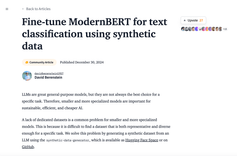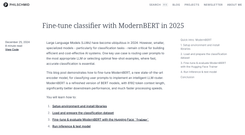Abstract
A goal of statistical language modeling is to learn the joint probability function of sequences of words in a language. This is intrinsically difficult because of the curse of dimensionality: a word sequence on which the model will be tested is likely to be different from all the word sequences seen during training. Traditional but very successful approaches based on n-grams obtain generalization by concatenating very short overlapping sequences seen in the training set. We propose to fight the curse of dimensionality by learning a distributed representation for words which allows each training sentence to inform the model about an exponential number of semantically neighboring sentences. The model learns simultaneously (1) a distributed representation for each word along with (2) the probability function for word sequences, expressed in terms of these representations. Generalization is obtained because a sequence of words that has never been seen before gets high probability if it is made of words that are similar (in the sense of having a nearby representation) to words forming an already seen sentence. Training such large models (with millions of parameters) within a reasonable time is itself a significant challenge. We report on experiments using neural networks for the probability function, showing on two text corpora that the proposed approach significantly improves on state-of-the-art n-gram models, and that the proposed approach allows to take advantage of longer contexts





